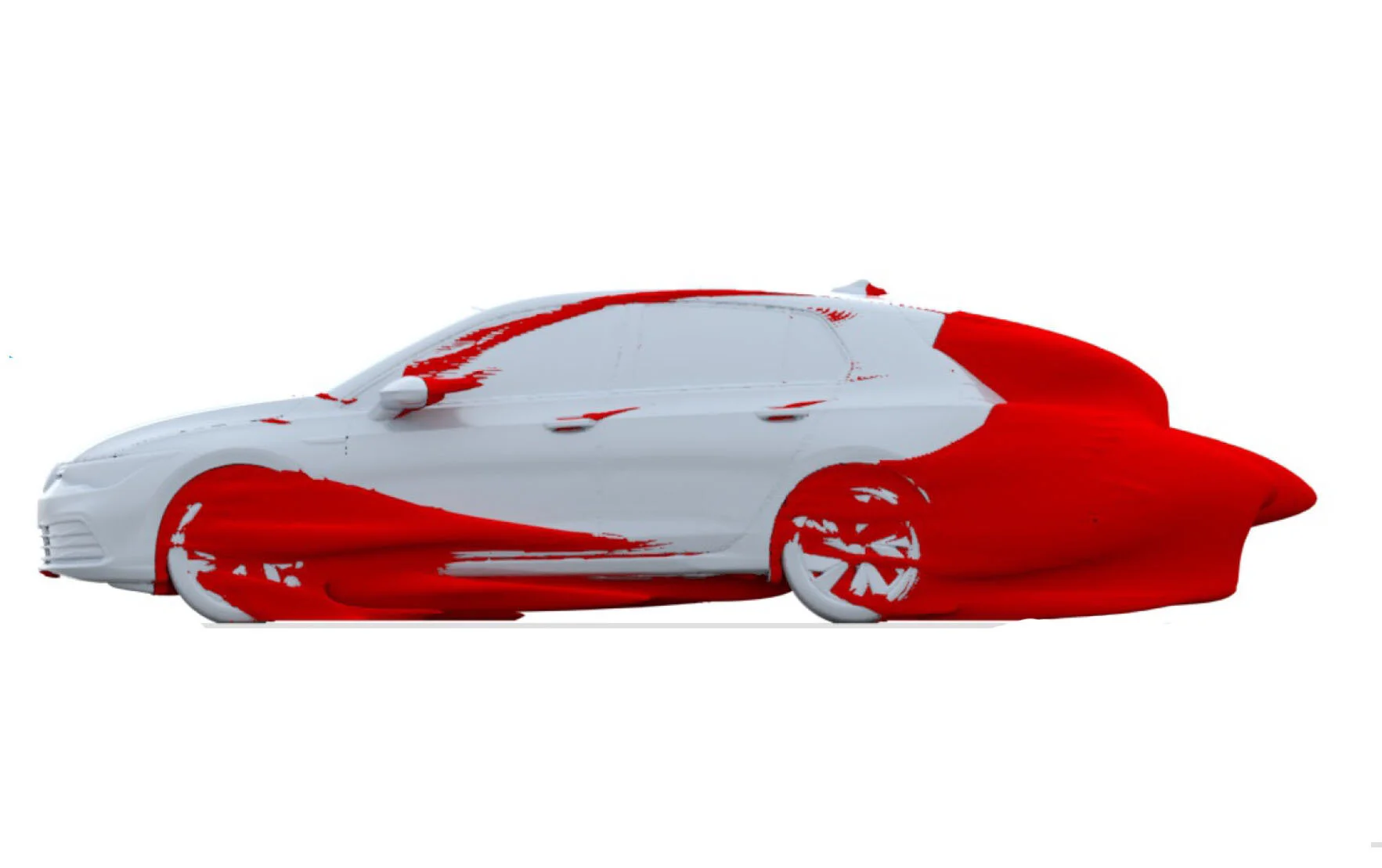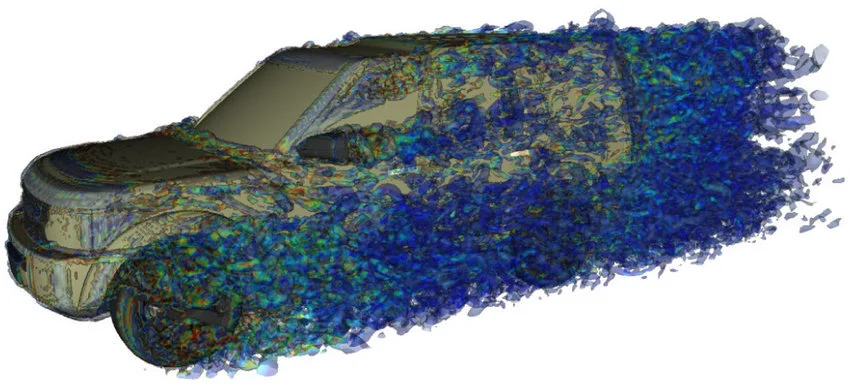How Is Aerodynamic Used to Design an Efficient Car
Have you ever stopped to wonder why cars look the way that they do?
While many automotive publications will obsess over the new-look kidney grilles of the BMWs, or talk about whether they like the aesthetics of a car model which has just had a facelift, they rarely discuss the importance of aerodynamics in car design.
Today we look at the importance of aerodynamics in ethical car design, detailing why this is important for making battery electric cars more efficient, and why this demonstrates more than ever that we need to do away with SUVs.
Aerodynamics Basics
It is important to state up front that this article is intended to be accessible to everyone, and that you don't need a degree in physics to fully grasp the importance of aerodynamics.
So what do we mean by aerodynamics?
In its simplest form, this relates to how much or how little resistance your car creates when air passes over it. The more aerodynamic it is, the less energy it will use, especially at higher speeds.
The aerodynamic efficiency of a car is measured by its drag coefficient - along with some other factors that we won't get into in this article for simplicity's sake.
The average modern car has a drag coefficient of around 0.3, while SUVs have a worse drag coefficient due to their boxy design and high stance, with them typically recording a score of between 0.35 and 0.45.

Drag analysis of a VW Golf Mk 8, demonstrating the areas of greatest airflow disturbance. Credit: Airshaper
Energy Efficiency
The rate of drag significantly increases with speed, much means that aerodynamics are responsible for a considerably higher proportion of energy consumption (electricity or fossil fuels) on motorways compared to urban use.
Based on data from Auto Research Centre, aerodynamics accounts for 50% of motorway energy use, and just 20% of urban energy use. This means that a 10% reduction in aerodynamic drag on motorways would improve your fuel economy by around 5%, and city economy by 2%.
This reinforces the efficiency and ecological benefits of lowering speed limits to 30kph in urban areas, as well as lowering the top speed on Ireland's motorways.

You can see from the shape of the Tesla Model 3 that it has been designed with aerodynamic efficiency in mind. Credit: Tesla
What This Means For EVs
This is also incredibly important for the future of battery electric vehicle design, as increased aerodynamic efficiency will allow them to go much further and much longer between charges, especially on motorways.
While internal combustion engine vehicles have had to be designed around a great lump of metal at the front, which limits their aerodynamic possibilities, battery electric vehicles don't suffer from the same constraints.
Motors are considerably smaller than engines, and can even be placed over axels, meaning there is little-to-nothing under the bonnet.
This is why some EVs offer a so-called 'frunk' – a 'front trunk' which provides significant storage space.
However, this also means that the front end of EVs can be sculpted to make them considerably more aerodynamically efficient, channelling air flow around the front end – the most aerodynamically challenging part of a car – to lower air resistance.
A perfect example of this is the Tesla Model 3, which has a drag coefficient of just 0.23 – making it the most aerodynamic standard roadworthy car in the world. This has been achieved by directing air flow under the body of the car to reduce drag, the use of a wedge shape on the nose to cause the least disturbance to air flow, as well as using curtains on the front end to guide air around the wheels, and aerodynamic wheel covers to reduce the turbulence that the holes in wheels create.
In fact, 2019 analysis by Car and Driver found that Tesla's aero wheels alone offer around an additional 16km (10 miles) of range.
"We should starting thinking about new body shapes. Electrification will also change the shape of cars. They need to be more aerodynamic" - Volvo CEO
Crucially this greater aerodynamic efficiency not only improves the range of the vehicle, but also means it can use a smaller capacity battery, which lowers the cost to consumers.
Tesla isn't alone in understanding the importance of improving aerodynamics to increase EV efficiency.
In a recent interview with AutoCar magazine, Volvo CEO Håkan Samuelsson stated: "We should starting thinking about new body shapes; it's not just sedans, wagons and SUVs. Electrification will also change the shape of cars. They need to be more aerodynamic, and we will surprise people a bit there in the future".
Given that EVs are already considerably more energy efficient than ICE vehicles – converting around 77% of their energy into propulsion, compared to around 20% for diesel vehicles, or 16% for petrol vehicles – there are even greater opportunities to improve range, which will make EVs even cheaper to run.
What Makes For An Aerodynamic EV?
The first part of a car that cuts through the air has a major impact on its drag coefficient.
The front grille of ICE cars creates a considerable amount of aerodynamic turbulence, which significantly increases drag and reduces the efficiency of the vehicle.
In fact, the grille design in most ICE cars can actually create too much airflow into the engine compartment, preventing it from warming up in the most efficient way – according to a study by the International Journal of Automotive Technology.
As such, beyond branding, there is little-to-no need for an EV to have a grille at all. The sleeker the front of a car, the more aerodynamic it is.
This is why EVs might stand out from the crowd when it comes to design choices, as seen on the Model 3 or the Hyundai Ioniq.

Even something as simple as using more aerodynamic hubcaps can lead to major gains in efficiency and range. Credit: Tesla
At the other end of the vehicle, you may also see diffusers at the rear. These little rakes smooth the flow of air in their wake and minimise turbulence coming from the underside of the car, as seen on the Nissan Leaf.
Even the shape of the wing mirrors can have a considerable effect on the efficiency of a vehicle. The Nissan Leaf's slightly bug-eyed headlights have been designed to direct air flow around the car's wing mirrors to lessen drag.
Perhaps the most exceptional example of aerodynamic efficiency is the forthcoming Lightyear One, which not only uses solar panels to supplement its running efficiency, but aims to have a drag coefficient of less than 0.20, which would make it the most aerodynamic car in the world.
If you want to drive an aerodynamically efficient vehicle, look for something sleek and smooth which has channels to guide airflow, and avoid anything boxy in shape.
In fact, SUVs are so energy inefficient that they were the second largest contributor to the increase in global CO2 emissions between 2010-2018, and their prevalence means that if SUV drivers were a single nation, it would rank as the seventh largest emitter of CO2 in the world.
This doesn't even include the increase in raw materials needed to make such oversized vehicles.
So what does this have to do with ethical car design?
Car companies have heavily marketed SUVs and have increased the size and ride height of their vehicle range dramatically over recent decades to the detriment of road safety and the Climate Crisis.
While they will tell us that this is in response to consumer demand – a consumer demand that they have made by bludgeoning people with SUV advertising and restricted non-SUV options – the truth is that they offer considerably higher profit margins.
An exposé by BusinessGreen found that manufacturers like Ford are able to make a $10,000 (€8,476) profit on every large SUV they sell, while they break even or even lose money on other models.


Illustration of air turbulence created by an SUV - note that there is considerably more disruption to airflow compared to the aerodynamically-designed Tesla (top). Credit: Unplugged Performance & Adrian Gaylard
"An exposé by BusinessGreen found that manufacturers like Ford are able to make a $10,000 profit on every large SUV they sell, while they break even or even lose money on other models"
As such it is entirely clear that there is an ethical issue around both the design and sale of SUVs.
While it is possible to make more aerodynamic SUVs – the hulking Tesla Model X has a drag coefficient of just 0.25, while the Model Y Crossover SUV comes in at an impressive 0.23 – this overlooks the greater harm that SUVs cause to society and the planet.
We need car companies not only to commit to more ethical design which prioritises efficiency in battery electric vehicles, but also need to see them make a statement by moving away from SUV production and the prioritisation of profits over ecological and public health.
Averting the worst outcomes of the Climate Crisis will require us to do considerably more with considerably less, and there simply can be no place for bloated, inefficient, un-aerodynamic SUVs if we are serious about averting the deaths of millions, and the displacement of billions more within our lifetime.
What To Read Next

Ethical Car Design: Leather
Why drive an EV to lower your carbon footprint, when it is lined with dead animals which are responsible for vast amounts of greenhouse gases?

Ethical Car Design: Gender Equality
We look at the issue of gender inequality in car design, and why we must strive for better safety standards that protect all genders – not just the average male

SUVs Are Killing The Planet
SUVs are twice as likely to kill a pedestrian in a collision and are the second largest cause of the global rise in carbon dioxide emission over the past decade.
How Is Aerodynamic Used to Design an Efficient Car
Source: https://www.irishevs.com/ethical-car-design-aerodynamics
0 Response to "How Is Aerodynamic Used to Design an Efficient Car"
Mag-post ng isang Komento